Are Cribs Safe For Babies? Revealing Facts
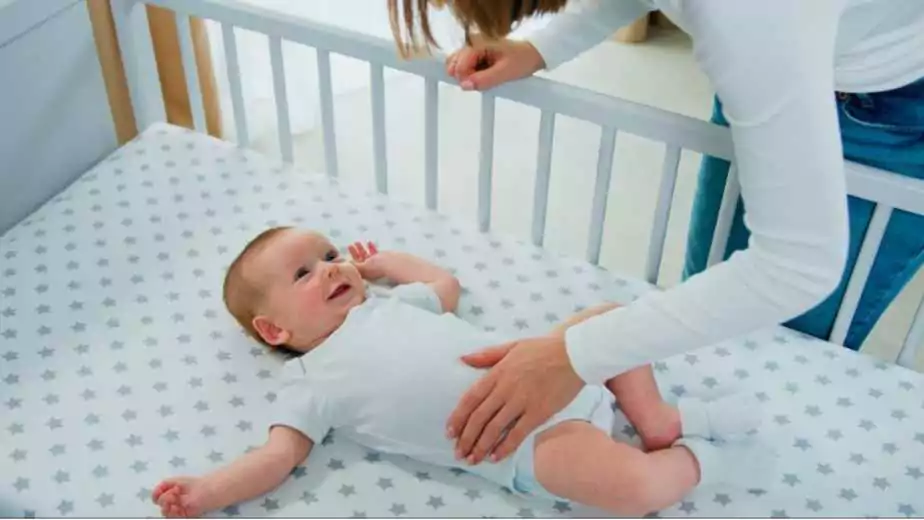
In the journey of parenthood, ensuring the safety and well-being of our newborns is paramount. Among the myriad of concerns that new parents face, the choice of a sleeping environment for their infant stands out as a crucial decision. This is especially true in India, where traditional practices often intertwine with modern parenting methods. The question of whether cribs are a safe option for babies remains a topic of considerable debate and concern.
In this blog, we aim to delve into the heart of this matter. We’ll explore the various aspects of using baby cribs, focusing on their safety, whether are cribs safe for babies or not. Understanding these factors is essential in a country like India, where diverse cultural practices and varying levels of access to childcare resources play a significant role in how we raise our children.
We intend to provide a comprehensive overview that not only addresses common concerns but also enlightens parents about the precautions they can take to ensure their baby’s safety while using a crib. Join us as we embark on this journey of understanding and cautious care in the realm of infant sleep environments.
1 The History of Baby Cribs
The Evolution of Cribs
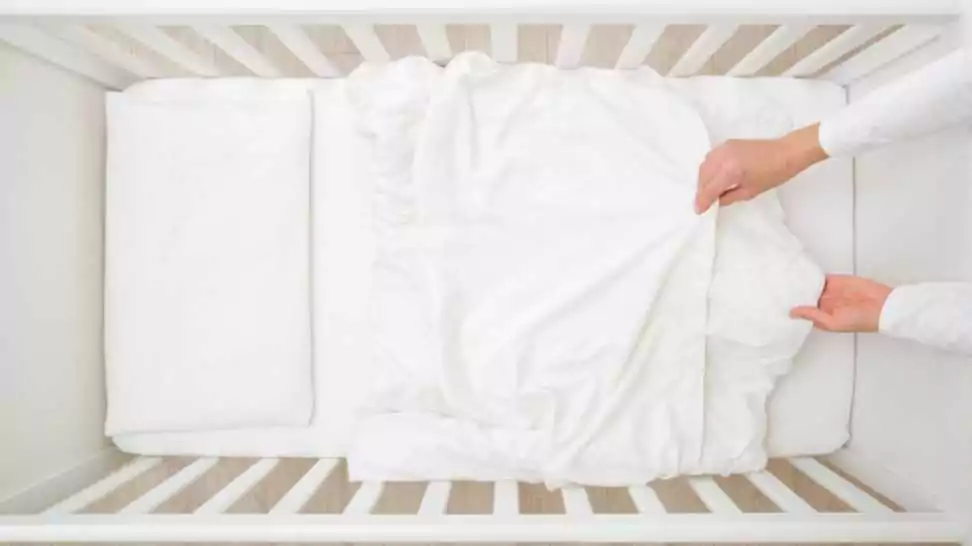
The concept of a dedicated sleeping space for babies is not a new one. Historically, in India and around the world, infants have been put to sleep in various types of beds tailored to the cultural, environmental, and economic contexts of the time. From simple hammocks and cradles made from natural materials to elaborately decorated bassinets, the evolution of the baby crib has been marked by innovation and cultural influences.
In India, traditional ‘palnas’ or swinging cradles have been popular for generations. These were often handcrafted from wood or metal, adorned with colourful fabrics, and designed to be suspended or placed on the floor. The crib, as we know it today, began to gain popularity in urban Indian households as a result of global influences and the increasing focus on child safety and convenience.
Changes in Safety Standards
The journey from traditional sleeping arrangements to modern cribs has been accompanied by significant changes in safety standards. In the early days, little attention was paid to the potential hazards of baby sleeping environments. Cribs were often designed with decorative elements that, while aesthetically pleasing, posed risks such as choking hazards or entrapment.
Over the years, with increasing awareness and research into infant safety, there has been a global shift in the design and manufacturing of baby cribs. Safety standards became more stringent, focusing on aspects like the distance between slats, the stability of the structure, the absence of small detachable parts, and the use of non-toxic materials. In India, this shift has been gradual but noticeable, with more parents now opting for cribs that meet international safety standards.
2 Safety Concerns with Cribs
Exploring Potential Risks
While cribs are designed to be safe havens for infants, there are inherent risks that parents need to be aware of. One of the most alarming risks associated with crib usage is Sudden Infant Death Syndrome (SIDS). SIDS is the unexplained death of a seemingly healthy baby during sleep. Research suggests that certain crib environments can increase the risk of SIDS, such as the presence of soft bedding, pillows, and loose blankets which could lead to accidental suffocation.
Another significant concern is injuries from crib bars. Older or poorly designed cribs may have wide spaces between the bars, posing a risk of infants getting their heads, limbs, or other body parts trapped. In India, where many families may use handed-down cribs or locally made versions that might not adhere to international safety standards, this risk can be elevated.
Recalls and Safety Warnings
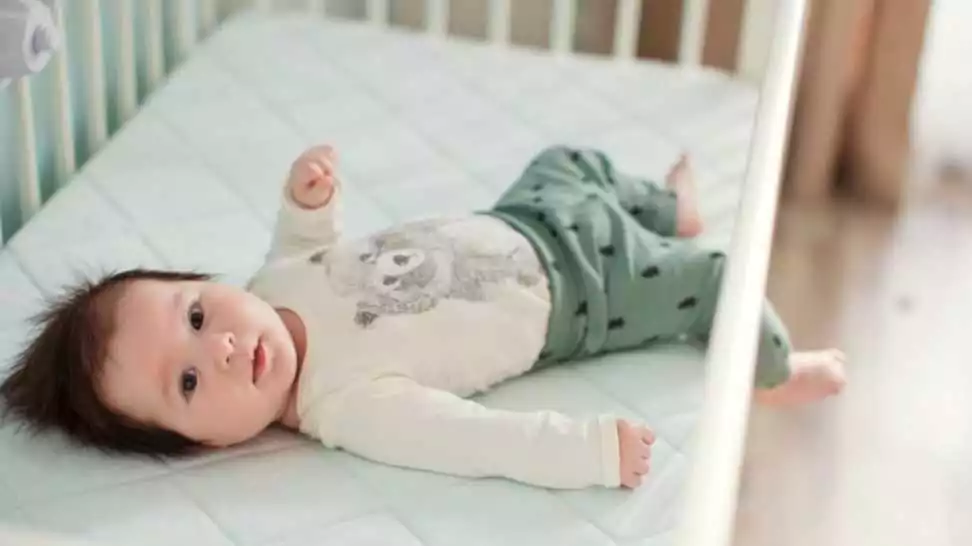
The issue of crib safety is taken very seriously globally, and this has led to multiple recalls and safety warnings over the years. Manufacturers have recalled cribs for reasons ranging from the potential for lead paint exposure to malfunctions that could lead to the crib collapsing. These recalls highlight the importance of adhering to stringent safety standards in crib manufacturing.
In India, the awareness of such recalls and the importance of using cribs that meet safety standards is growing. With increasing access to global markets and information, Indian parents are becoming more discerning about the products they choose for their children. However, there’s still a long way to go in ensuring widespread awareness and availability of safe crib options for every family.
Navigating Through Misinformation
Part of the challenge in ensuring crib safety lies in navigating through misinformation and varying standards. What is considered safe in one country may not align with the guidelines in another. Parents are often left to make sense of conflicting advice on what makes a crib safe. This is compounded in the Indian context, where traditional practices and modern advice intersect.
3 Safety Standards and Regulations
Understanding Current Safety Standards
In the world of baby cribs, safety standards are the cornerstone of ensuring that our little ones sleep safely. These standards have evolved significantly over time, reflecting a growing understanding of infant safety. Currently, several key standards govern crib safety, which includes specifications for slat spacing, mattress fit, crib stability, and the absence of potentially dangerous hardware or materials.
In India, the adoption of these standards is increasingly influenced by global practices. However, the regulatory environment can vary, with many cribs still not adhering to internationally recognised safety standards. This poses a unique challenge for Indian parents, who must navigate a market with a diverse range of crib safety standards.
The Role of Certifications
Certifications play a crucial role in crib safety. They serve as a seal of approval that a crib has been tested and meets certain safety criteria. Common certifications that parents might encounter include the JPMA (Juvenile Products Manufacturers Association) certification, ASTM (American Society for Testing and Materials) standards, and the European EN (European Norm) standards. These certifications assess various aspects of crib safety, from structural integrity to the toxicity of materials used.
In the Indian context, understanding these certifications becomes crucial. While not all cribs sold in the country may carry these certifications, being aware of them helps parents make informed choices. A crib that boasts a recognized certification is a reassurance that it adheres to stringent safety norms, offering parents peace of mind.
Why do Certifications Matter?
Certifications are not just mere labels; they are a testament to a product’s compliance with rigorous safety tests. They assure that the crib will not only provide a comfortable sleeping environment for the baby but also a safe one. These certifications consider the latest research in infant safety and are regularly updated to reflect new findings.
For Indian parents, choosing a certified crib can sometimes mean a higher cost. However, the investment is often justified in the name of safety. Parents need to weigh the cost against the potential risks of using a non-certified crib, keeping in mind that the safety and well-being of their child is paramount.
Navigating Indian Markets
The Indian market, with its blend of traditional and modern products, offers a wide range of choices for parents. However, with this variety comes the responsibility of making informed decisions. Parents need to be vigilant, researching and understanding the safety standards and certifications of cribs. As the awareness and demand for safe cribs grow in India, it’s hoped that more manufacturers will adhere to these important safety standards, making safe sleep environments accessible to all.
4 Choosing a Safe Crib
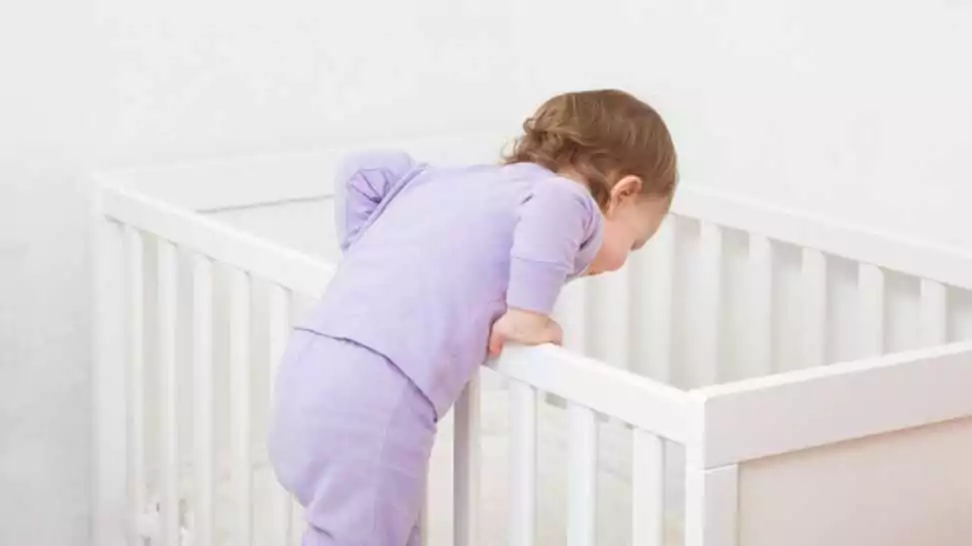
Key Tips for Selecting a Safe Crib
When it comes to choosing a crib for your baby, safety should be the foremost criterion. In India, where options range from locally made cribs to imported designs, making the right choice can be daunting. Here are some essential tips to help you select a safe crib:
- Check for Safety Certifications: As discussed earlier, certifications like JPMA, ASTM, or EN are indicators of a crib’s compliance with safety standards. Always look for these certifications when selecting a crib.
- Avoid Drop-Side Cribs: Drop-side cribs, once popular for their convenience, have been found to pose significant safety risks, including entrapment and suffocation hazards. These types of cribs have been banned in several countries, and it’s advisable to avoid them.
- Inspect the Crib Structure: A sturdy crib is a safe crib. Ensure that the crib is well-constructed with no loose or missing parts. The slats should be no more than 2 3/8 inches (about 6 cm) apart to prevent the baby’s head from getting trapped.
- Ensure Proper Mattress Fit: The mattress should fit snugly within the crib, with no gaps on the sides. An ill-fitting mattress can pose a risk of entrapment and suffocation.
- Avoid Decorative Elements: Cribs with decorative cut-outs or embellishments can be tempting, but they can pose a risk of entanglement or injury. Opt for a simple, functional design.
Importance of Following Manufacturer Guidelines
Adhering to the manufacturer’s guidelines is not just a recommendation; it’s a necessity for ensuring the safety of your child. These guidelines provide specific instructions on assembling and using the crib correctly. Using a crib improperly can compromise its safety features, putting your child at risk.
- Carefully Read the Manual: Always read the assembly and usage instructions thoroughly before setting up the crib.
- Regular Maintenance Checks: Periodically check the crib for any loose screws, worn-out parts, or structural weaknesses. Regular maintenance ensures the crib remains safe for use over time.
- Stay Updated with Recalls: Keep an eye on product recalls and safety alerts related to cribs. In case your crib model is recalled, follow the manufacturer’s instructions for repair, replacement, or refund.
- Adhere to Weight and Age Limits: Every crib has specified weight and age limits. Ensure you transition your child to an appropriate sleeping arrangement once these limits are reached.
5 Safe Sleep Practices in Cribs
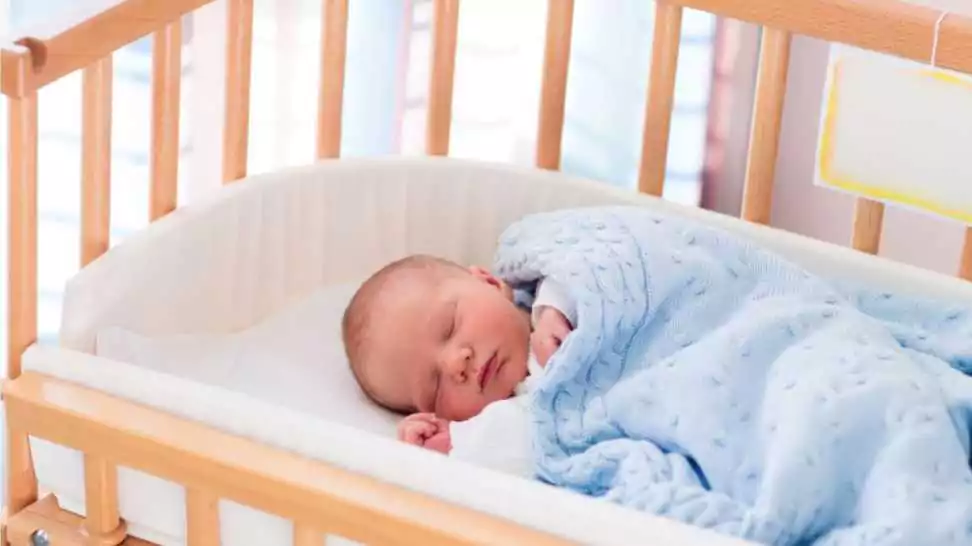
Ensuring that your baby’s crib is safe goes beyond selecting the right model; it also involves adhering to safe sleep practices. This is crucial in minimising risks like Sudden Infant Death Syndrome (SIDS) and other sleep-related accidents.
Guidelines for Safe Bedding and Mattress Use
- Firm Mattress: Always use a firm mattress that fits snugly in the crib. A soft mattress can conform to the shape of your baby’s head or face, increasing the risk of suffocation.
- Minimal Bedding: Keep the crib as bare as possible. Soft objects such as pillows, quilts, comforters, plush toys, and loose bedding can obstruct an infant’s airway and pose a suffocation hazard.
- Proper Fitting Sheets: Use a tightly fitted sheet specifically designed for the crib mattress. Loose sheets can become a strangulation risk.
- Avoid Sleep Positioners: Do not use infant sleep positioners like wedges or supports. These products have not been proven safe and can increase the risk of entrapment and suffocation.
Recommendations for Crib Placement and Room Sharing
- Safe Crib Placement: Place the crib in an area that is free from hazards. It should be away from windows, curtains, blind cords, wall decorations, and furniture that the child could climb on.
- Room Sharing, Not Bed Sharing: The American Academy of Paediatrics recommends room sharing—keeping the baby’s crib in the parent’s room but not in the same bed—for at least the first six months. This can reduce the risk of SIDS by as much as 50%.
- Avoid Overheating: Keep the room at a temperature that is comfortable for a lightly clothed adult. Overheating has been associated with an increased risk of SIDS.
- Back to Sleep: Always place your baby on their back to sleep. This position has been shown to significantly reduce the risk of SIDS.
In India, where joint family systems are common, and traditional practices often influence child-rearing, adapting these recommendations is important. Educating family members about safe sleep practices and the reasons behind them can be helpful. Additionally, considering the climatic variations across the country, adjusting the clothing and bedding to ensure the baby is not too hot or too cold is essential.
6 Alternatives to Traditional Cribs
While traditional cribs are a popular choice for many parents, several alternative sleeping arrangements can be suitable for infants, each with its own set of advantages and considerations.
Bassinets
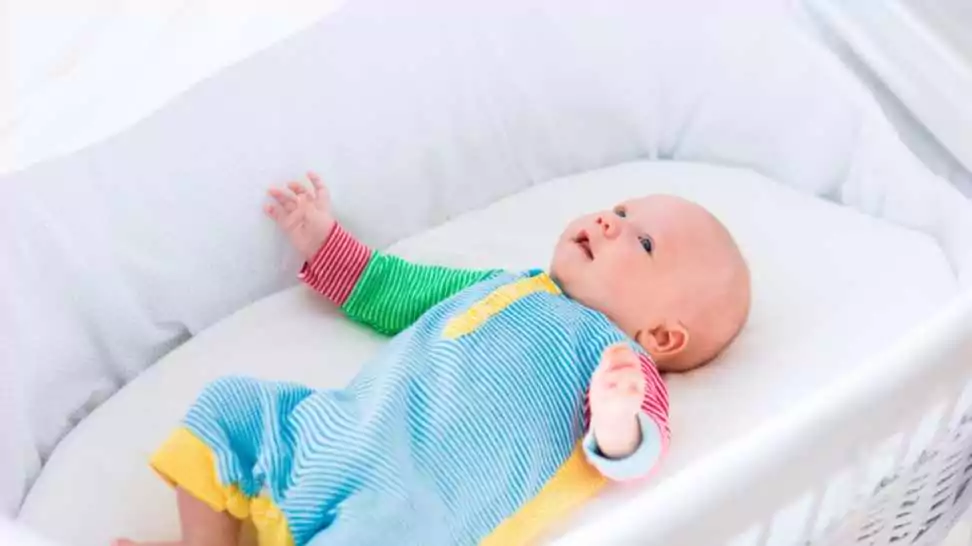
Bassinets are smaller, portable sleeping spaces that are ideal for newborns and can be used during the first few months after birth.
Pros:
- Portability: Their small size and portability make it easy to keep the baby close, especially during the night.
- Convenience: Ideal for small spaces and for parents who want to avoid the bulkiness of a crib.
- Comfort: Cosy and snug, which can be comforting for newborns.
Cons:
- Short-term Use: Bassinets are only suitable for a short period, as they can quickly become too small for the growing baby.
- Stability: They may not be as sturdy as traditional cribs.
Co-sleepers
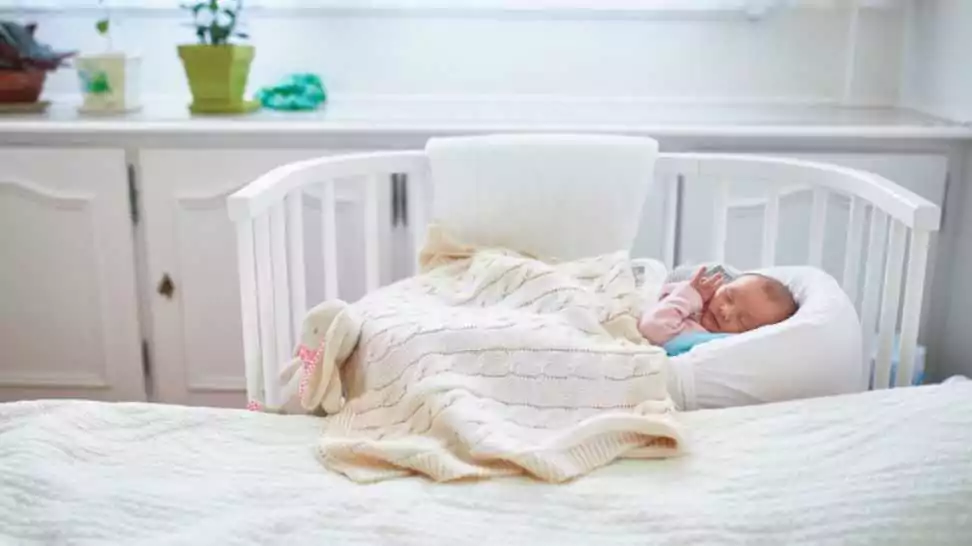
Co-sleepers are designed to attach to the side of the parent’s bed, allowing for proximity to the baby while maintaining separate sleeping spaces.
Pros:
- Ease of Breastfeeding: Facilitates easier night time feedings and comfort.
- Bonding: Allows for close bonding without the risks associated with bed-sharing.
- Convenience: Easy to reach the baby during the night without getting out of bed.
Cons:
- Limited Use: Like bassinets, co-sleepers have a limited period of usability as they are designed for infants.
- Space Requirements: They require a bed of a certain height and structure to attach safely.
7 Wrapping Up
In our exploration of whether cribs are safe for babies, we’ve traversed a range of topics, each shedding light on the complexities of ensuring a safe sleep environment for our little ones. As we conclude, it’s clear that choosing the right sleeping arrangement for a baby is a decision that involves balancing convenience, cost, and, most importantly, safety. While convenience and cost are significant factors, especially in the diverse socio-economic landscape of India, they should never overshadow the safety aspect.
Modern advancements and traditional wisdom both play a role in shaping our decisions. However, the underlying thread should always be the well-being of our children. Whether it’s a high-tech crib or a simple, time-honoured design, the choice must prioritise the child’s safety above all else.
Community Q&A
About This Article
This article has been viewed 81 times.



